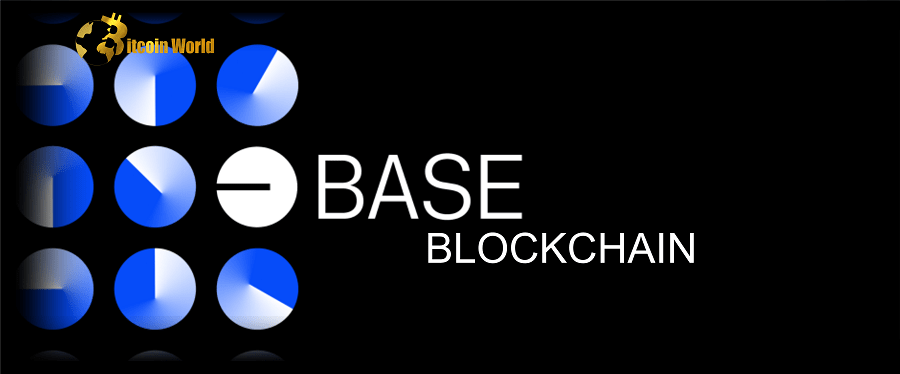The crypto world is buzzing about Coinbase’s latest move! The popular cryptocurrency exchange just unveiled its brand new layer-2 network, aptly named ‘Base’. Built on the robust foundation of Ethereum and powered by Optimism, Base is generating significant excitement within the Ethereum community. Some are even calling it a “watershed moment” and a massive vote of confidence for the entire Ethereum ecosystem. But what exactly is Base, and why is everyone talking about it?
What is Coinbase’s Base and Why is it a Big Deal for Ethereum?
Think of Base as a highway expansion for Ethereum. Ethereum, while being the leading blockchain for decentralized applications (dApps), sometimes faces congestion and higher transaction fees, especially during peak usage. Layer-2 networks like Base are designed to solve this. They essentially operate ‘on top’ of the main Ethereum network, processing transactions faster and cheaper, before settling them back on the main chain for security.
Coinbase CEO Brian Armstrong highlighted that Base is currently in its testnet phase and aims to become a hub for developers to build decentralized applications. This is a significant step because Coinbase is not just any crypto company.
- Massive User Base: Coinbase boasts around 110 million verified users and has partnered with 245,000 businesses across over 100 countries since its inception in 2012.
- Trading Powerhouse: Coinbase’s exchange is the second largest globally in terms of trading volume, only behind Binance, according to CoinGecko.
Ryan Sean Adams, host of the Bankless Show, aptly described this move as a “massive vote of confidence for Ethereum.” Why? Because it signals that major players like Coinbase see Ethereum as the foundational layer for the future of finance and the internet. This could pave the way for more crypto businesses and traditional financial institutions to build upon and utilize Ethereum as their primary settlement layer.
Why is the Crypto Community So Excited About Base?
The excitement surrounding Base stems from several key factors:
-
Potential for Mass Adoption:
Ryan Sean Adams believes that if Coinbase successfully converts even 20% of its massive user base to Layer 2 users in the coming years, it could 10x the total number of crypto-native users. Imagine the impact! This isn’t just about crypto enthusiasts; it’s about bringing everyday users into the decentralized web.
-
Open-Source and Community-Focused:
Coinbase’s decision to make Base open-source is being widely applauded. This means anyone can build on it, contribute to its development, and benefit from its growth. It aligns with the core ethos of the crypto space – decentralization and collaboration.
-
Boosting Ethereum’s Block Space Demand:
As more activity moves to Base, it will ultimately increase the demand for block space on Ethereum. This is beneficial for Ethereum as it strengthens its utility and potentially its value.
-
Strategic Choice of Layer 2:
Sebastien Guillemot, co-founder of dcSpark, pointed out Coinbase’s strategic decision to build on a layer-2 rather than a standalone sidechain. Layer 2s are increasingly becoming the preferred scaling solution, already handling a significant portion of Bitcoin and Ethereum transactions.
-
Coinbase’s Capacity to Drive Adoption:
Ryan Watkins, co-founder of Syncracy Capital, echoed the sentiment, calling it a “watershed moment” for Ethereum rollups. He emphasized that Coinbase is uniquely positioned to bring the next 10 million (or even more) users and institutions into the Ethereum ecosystem.
Are There Any Concerns About Base? The Regulatory Tightrope
While the overall reaction is overwhelmingly positive, not everyone is entirely optimistic. A key concern revolves around centralization and potential regulatory scrutiny.
Gabriel Shapiro, general counsel at Delphi Laboratories, raised a valid point about regulatory risks. He argued that launching a centralized layer-2 network could “open the door” to increased inspection from the Securities and Exchange Commission (SEC).
His concern stems from the fact that a centralized L2 handling a large volume of token trading and DeFi transactions could attract the SEC’s attention, particularly regarding potential securities law violations. Shapiro believes this move might even accelerate the SEC’s focus on secondary markets within the blockchain space.
This concern is not unfounded, especially considering the SEC’s recent ramped-up enforcement actions against stablecoin issuers and staking service providers. The regulatory landscape for crypto is still evolving, and any move by a major player like Coinbase is bound to be closely watched by regulators.
Base: A Balancing Act Between Innovation and Regulation
Coinbase’s Base network represents a significant step forward for Ethereum scaling and crypto adoption. It leverages the power of layer-2 technology to address key challenges of speed and cost, while tapping into Coinbase’s massive user base and brand recognition.
However, the concerns regarding centralization and regulatory scrutiny are also valid and need to be carefully considered. The success of Base, and layer-2 networks in general, will likely depend on navigating this delicate balance between fostering innovation and complying with evolving regulatory frameworks.
Ultimately, Base is a bold move by Coinbase, signaling a strong belief in the future of Ethereum and decentralized technologies. Whether it truly becomes a “watershed moment” remains to be seen, but it has undoubtedly ignited a crucial conversation about the path forward for crypto adoption and the intricate dance with regulation.
Disclaimer: The information provided is not trading advice, Bitcoinworld.co.in holds no liability for any investments made based on the information provided on this page. We strongly recommend independent research and/or consultation with a qualified professional before making any investment decisions.


